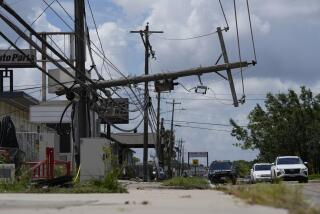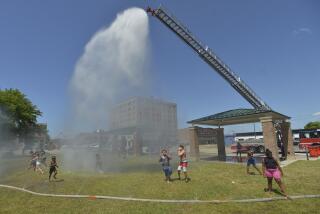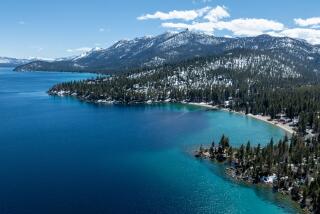What’s going on with this massive lake-effect snowstorm in Buffalo?
For some people, Buffalo is the home of hot chicken wings, but the not-so-secret reality is that it is far more well known for its nasty snowfalls. More than 5 feet of snow has fallen in the area this week and more is expected. At least five deaths have been attributed to the storm that began on Tuesday.
It is not unusual for the region to spend parts of the late fall to early spring months buried under snow. Seven of the top 10 cities, as ranked by annual snowfall, are in upstate New York and lie within the general path of the storms coming in off the Great Lakes.
What makes this storm unusual?
What set this storm apart is the magnitude of snowfall. Buffalo and environs received up to 60 inches of snow in just over a day--almost two-thirds of the yearly allotment.
Still, this week’s blizzards are short of all-time records. According to Weather Underground, a commercial weather service, the continental U.S. record for a 24-hour snowfall is 75.8 inches at Silver Lake, Colo., over April 14-15, 1921. Alaska reported 78 inches at Mile 47 Camp on Feb. 7, 1963.
Why is this region often hit hard by snow?
First, it’s necessary to understand the special type of storm, known as lake-effect snow.
In general, a snowflake forms when a very cold drop of water freezes onto a bit of dust creating a crystal. As the crystal speeds earthward, more water vapor freezes onto the seed, creating more crystals and forming the distinctive six limbs of the flake.
Lake-effect snow forms when a cold air mass moves over warmer lake waters, according to the National Oceanic and Atmospheric Administration. The lake water evaporates and heats the bottom layer of air above the lake. As the water vapor rises, it cools and condenses, forming clouds and eventually snow.
Cities like Buffalo, off Lake Erie, one of the five freshwater Great Lakes, are breeding grounds for snow because colder air is almost always blowing over the warmer water.
What are the characteristics of lake-effect snow?
Because of winds off the lake, the snow often falls in bands, meaning it can be falling at a fast clip within the storm area, but the skies will be clear dozens of miles away.
Lake-effect snow is not limited to the Great Lakes region of the United States. It can form off bays such as Cape Cod in Massachusetts and Chesapeake off Maryland and Virginia. The Great Salt Lake in Utah can also have lake-effect snow. The key is the temperature differential.
Does global warming figure into this?
When there is an early or especially fierce snowstorm, the debate over global warming almost invariably returns in some form of the question: Does the cold snow mean that global warming is a myth?
No.
Most scientists agree that there is a difference between weather – happening right now – and climate, patterns that take place over decades. Because of that you can have immediate cold winters and longer term global warming.
Follow @latimesmuskal for national news.
More to Read
Sign up for Essential California
The most important California stories and recommendations in your inbox every morning.
You may occasionally receive promotional content from the Los Angeles Times.











